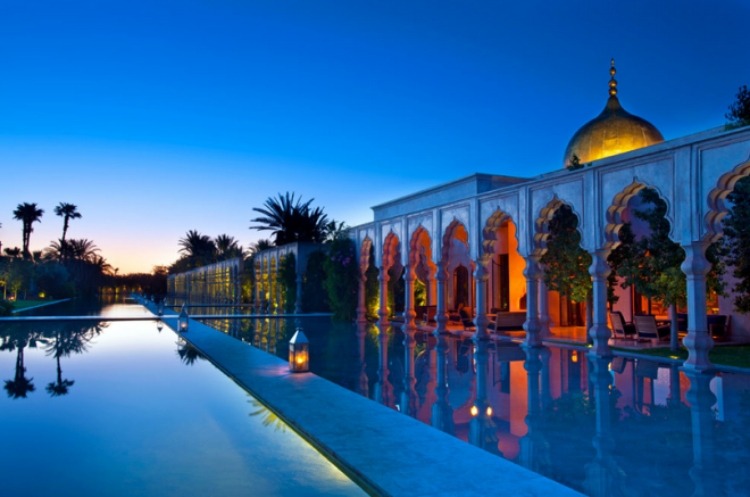Morocco, with cities like Casablanca and Marrakesh that redefine beauty and culture through an aesthetic lens that captures the past and present, is one of the most magnificent countries in the Middle East and the world. It is a great tourist destination with so many things to do, thanks to historical sites that depict the diversity of cultures inside the country. Morocco is the Middle East’s jewel, with delicious food, beautiful beaches, and a plethora of cultural attractions.
Therefore, we will take you on a 48-hour adventure through Casablanca and Marrakesh to experience all of the wonders that these two sparkling cities have to offer.
Let’s begin our journey in Marrakesh!
Koutoubia Mosque (Early Morning)
If you are an early riser, you can begin your day at the Koutoubia Mosque. It opens as early as 8 am in the morning or you can have a late breakfast and head there as late as the afternoon. You will need the daylight to be able to admire this Moroccan structure. This mosque is not only recognized for its simple luxury and superb architecture but also for its grandeur, being Marrakech’s largest mosque. Built during the Hispano-Moresque period in the 12th century, visiting it will provide you with a window into the mosque’s thousand-year-old past.
Its name alone, Koutoubia, gives us access to some of Marrakech’s past as it translates to “booksellers”. At a time, the mosque used to be surrounded by booksellers who would sell manuscripts. Its Moorish architecture of sharply pointed parapets around the Minaret and its scallop jagged arches is also indicative of its historical significance. The mosque’s design acted as an inspiration for the construction of the Giralda in Seville, Spain as well as other mosques.

The Koutoubia Mosque is not just restricted to its building. Visitors can also roam around the base of the structure, taking in the ruins of the original prayer hall and reservoirs, which are generally open only during special events, and check out its majestic gardens and dancing fountains.
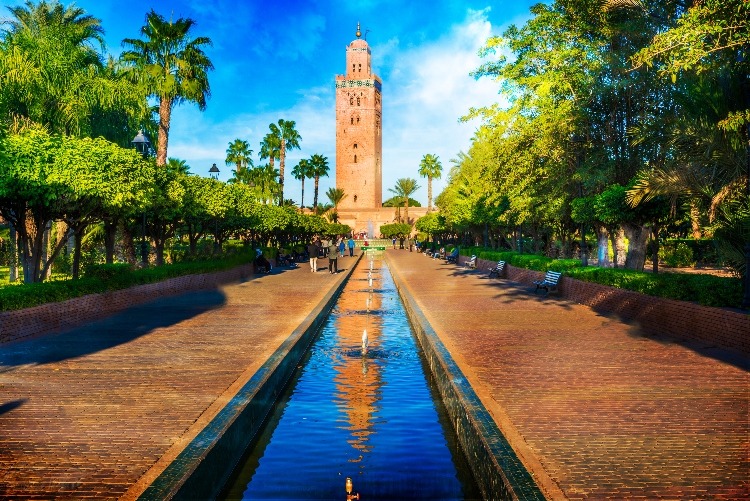
Jardin Majorelle (Afternoon)
Yves Saint Laurent and his partner Pierre Bergé purchased Jardin Majorelle in 1980 with the intention of preserving the vision of its previous owner, French landscape painter Jacques Majorelle, and keeping it available to the public. Heading to the Jardin in daylight is important so you can soak up its gardens and bright-colored buildings.
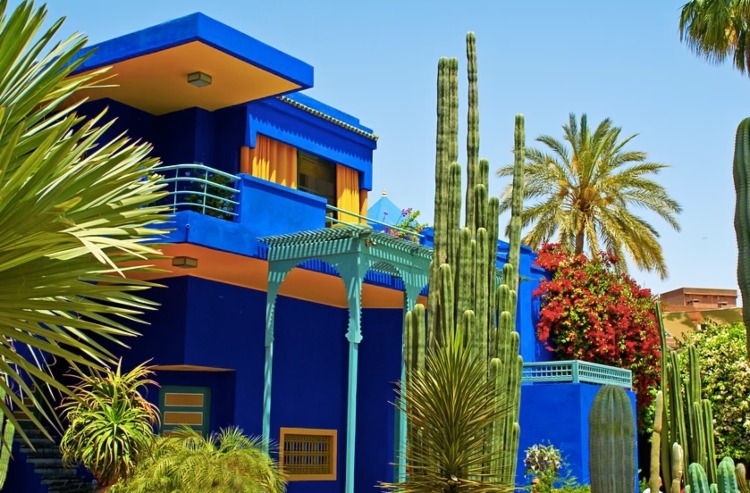
The Jardin Majorelle houses a charming courtyard cafe, a tiny book and photography shop, and a trendy boutique selling Majorelle blue slippers, textiles, and amazing jewelry influenced by Saint Laurent.
It is also home to the Musée Berbère which provides visitors with a look into Morocco’s indigenous people, the Berbers, through 600 artifacts that include metal work and textiles. Surrounding the area is also a large garden with many plant species from five continents. Perhaps the Jardin Majorelle is the spot for you if you’re looking for aesthetically pleasing venues that connect history and fashion to the present.
Jemaa el-Fnaa (After Sunset)
The echo of the maghrib (sunset) prayer will begin to emanate from Koutoubia mosque. That’s your cue to head to Jemaa El-Fnaa, located in the medina quarter of Marrakech. Hitting it up during sunset is the best time because that is when the market truly comes alive.
It was declared by UNESCO as a Masterpiece of World Heritage in 2001 for bringing urban folklore and history to life. Considered the beating heart of all of Marrakech, it’s a meeting point for all walks of life. From locals to tourists. From young to old. But it’s not just its visitors that exude the coming together of a melting pot of identities. The market itself brings together a cultural blend of color, fragrances, sight, and sound.
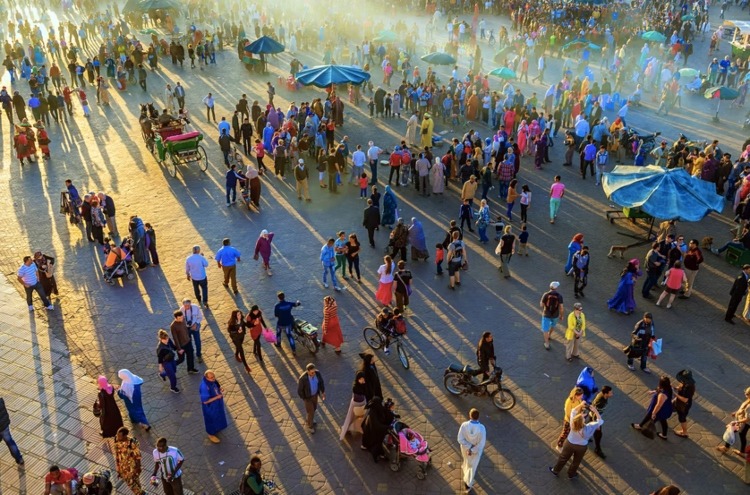
From 4 pm, food stalls would begin to open. This is for the brave foodies out there. Be ready to munch on everything from spicy nail broth to skewered hearts. Not to worry, they also serve fried calamari and fish as well as Morocco’s ultimate dish, its famous hearty stew known as “Tagine.”
Next up, is the night’s entertainment. Right after sunset, the hypnotic sounds of traditional Berber and Gnawa (a traditional form of Moroccan music) singers will begin to be heard. Before you can soak it all in, henna artists will lure you for a hand-drawn tattoo while fortune tellers will attempt to spiel your future and water-sellers wearing a unique hat will clang brass cups together in an attempt to get people to drink.
Also, it is normal to find acrobats doing tricks on a regular basis there. It will be a bustling night so be sure to have rested well after your afternoon visit to Jardin Majorelle to truly get the best experience.

To change things up, you should spend your next day in Casablanca, or “Casa” as many people and visitors like to call it.
Hassan II Mosque (Early Morning)
Some believe it’s the world’s third-largest mosque, while others say it’s closer to the fifth. Its 210m tall minaret is the world’s tallest, so it can at least claim that title. There’s no denying its opulence, with a rumored construction cost of 800 million dollars. Its grandeur is exemplified by the intricacy behind its construction as well as the luxurious materials used to build the masterpiece. Over 6000 craft experts were involved in its creation and materials like brass were used to form its gates.
It’s the only mosque that has a folding ceiling that allows worshippers to look up to the heavens and a glass floor that allows devotees to kneel with a direct view of the ocean. This is unquestionably a location worth seeing during your stay in Casablanca. With the early morning sun above, you’ll get to admire the beauty of Casablanca’s 1993 religious landmark.
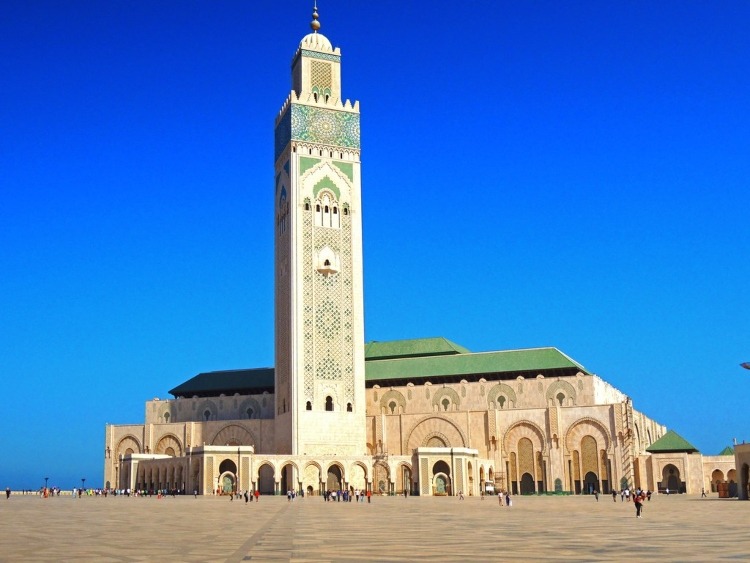
Musée Abderrahman Slaoui (Afternoon)
Abderrahman Slaoui’s outstanding collection of Moroccan decorative arts is on display at this privately owned house-turned-museum, which includes everything from Orientalist travel posters to landscape paintings by Jacques Majorelle, and exquisite perfume flasks.
Opened in 2012, it holds all the art collections gathered together by Abderrahman Slaoui who was a famous businessman and art collector. The collections were pooled together from his travels around the world. Take a break from sightseeing at the terrace cafe and sip on some mint tea, which plays an essential role in Moroccan life and social relations: it is, after all, the drink of friendship and hospitality.
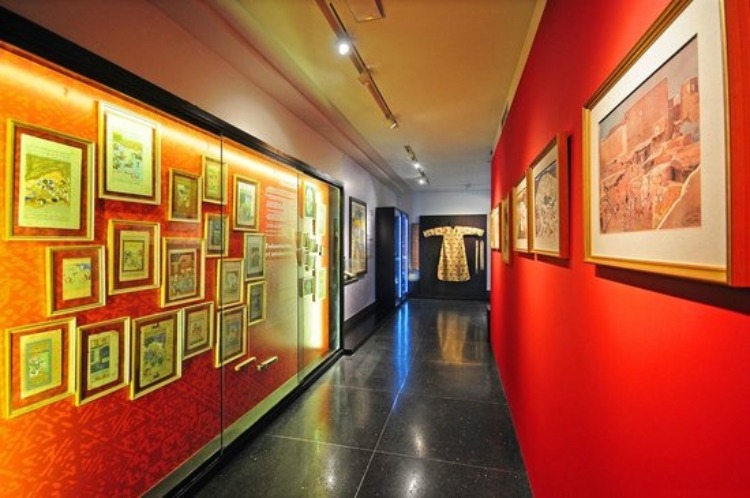
Umayya (Right Before Sunset)
If you are craving the colorful spectacle that occurs during every sunset while dining out, there is a place in Casablanca that can give you both. A lunch with an ocean view is essential, but how about a location that serves delicious Moroccan cuisine alongside a floor-to-ceiling breathtaking vista that will take your breath away and make you fall even more in love with Casablanca?
Umayya, settled along the Corniche, serves tasty Lebanese, Moroccan, and Mediterranean food. Dishes include Moroccan classics like vegetable couscous and lamb tagine. They also have live entertainment including dancers and singers.

Now your 48-hour vacation has come to an end after you’ve visited those amazing six destinations. However, these locations were only a small portion of Morocco’s highlights; there are many more stunning tourist sights that you must see. So, next time, why not aim for a 72-hour vacation.


